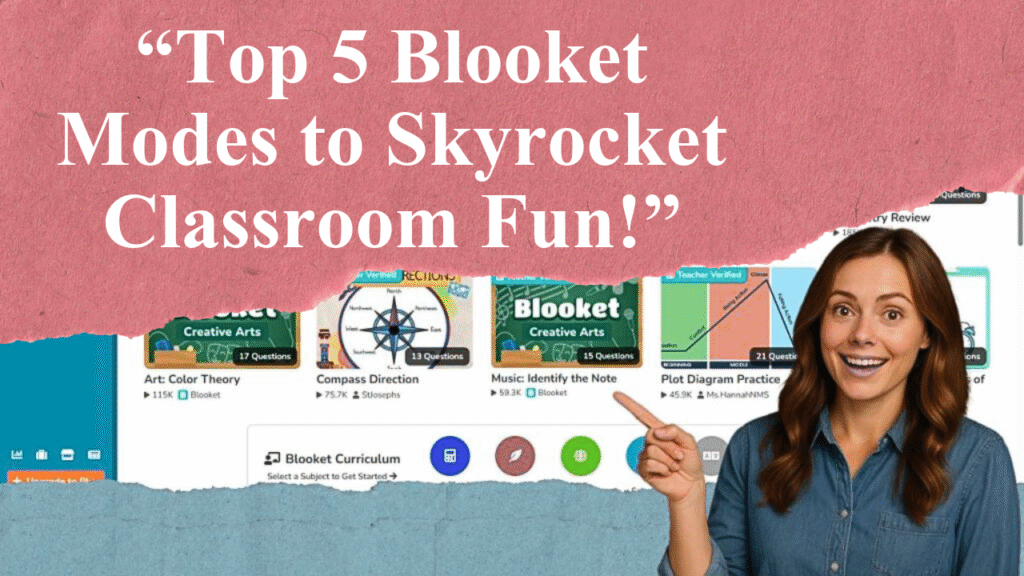Blooket game reports offer teachers actionable insights to enhance instruction. By analyzing class accuracy, individual performance, and question-level data, educators can identify knowledge gaps, tailor lessons, and boost engagement. This article explores how to access and interpret Blooket reports, providing practical steps to refine teaching strategies and foster student success through data-driven decisions.
Leveraging Blooket Game Reports for Effective Teaching
Blooket, a gamified learning platform, transforms traditional classroom reviews into engaging, interactive experiences. Beyond its fun game modes, Blooket provides detailed game reports that offer valuable insights into student performance. These reports enable teachers to assess understanding, identify areas for improvement, and tailor instruction to meet diverse student needs. Here’s how to effectively analyze Blooket game reports to enhance teaching strategies.
Accessing Blooket Game Reports
To begin, teachers must know how to access game reports. After hosting a live game, navigate to the game’s end screen and select “View Report” in the top right corner. For past games, go to the “History” tab on the Blooket dashboard to view all previous reports. For homework assignments, reports are available on the “Homework” page. Standard reports, available to all users, include class accuracy, individual student performance, and question set details. Blooket Plus subscribers gain access to enhanced reports with deeper insights, such as detailed question analysis and downloadable spreadsheets.
Understanding Key Metrics
Blooket game reports provide several key metrics to evaluate student performance:
Class Accuracy: This metric shows the percentage of questions answered correctly by the entire class. A low class accuracy rate may indicate that a concept needs reteaching or clarification.
Individual Performance: Reports display each student’s accuracy rate, total points earned, and ranking on the leaderboard. This helps identify high performers and students who may need additional support.
Question-Level Analysis: For Blooket Plus users, reports include a breakdown of correct and incorrect answers for each question. This pinpoints specific topics or questions where students struggled.
Identifying Knowledge Gaps
One of the most powerful uses of Blooket reports is identifying knowledge gaps. By reviewing the “Questions” section in a game report, teachers can see which questions were frequently answered incorrectly. For example, if a majority of students miss a question on fractions, it signals a need to revisit that concept in class. This data-driven approach ensures that instruction targets specific areas of difficulty, making lessons more effective. Teachers can also compare performance across multiple games to track progress over time, noting whether reteaching efforts have improved understanding.
Tailoring Instruction Based on Data
Blooket reports allow teachers to customize instruction to meet individual and class needs. For students struggling with specific topics, provide targeted resources, such as additional practice problems or one-on-one support. For high-performing students, offer advanced questions or enrichment activities to maintain engagement. Use class-wide trends to adjust lesson plans—focus on reteaching concepts with low accuracy rates or incorporate more hands-on activities to reinforce learning. Blooket’s real-time feedback enables teachers to make these adjustments promptly, fostering a responsive classroom environment.
Using Reports to Enhance Engagement
Blooket’s gamified format naturally boosts student engagement, but reports can further enhance motivation. Share class accuracy and individual performance metrics with students to foster a growth mindset. For example, highlight improvements in accuracy rates to celebrate progress. Use leaderboards sparingly to encourage friendly competition, but avoid overemphasizing rankings, as some students may feel discouraged if they don’t place high. Instead, reward effort-based achievements, such as achieving a certain accuracy percentage, to keep all students motivated. Teachers have reported success with this approach, noting that students remain enthusiastic about Blooket activities when progress is acknowledged.
Incorporating Feedback into Teaching Strategies
Providing constructive feedback based on Blooket reports is crucial for student growth. After reviewing reports, share insights with students individually or as a class. For instance, discuss common mistakes on specific questions and clarify misconceptions during the next lesson. Encourage students to reflect on their performance by asking questions like, “What strategies helped you succeed?” or “What can we review to improve next time?” This feedback loop not only reinforces learning but also teaches students to take ownership of their progress.
Leveraging Game Modes for Targeted Insights
Blooket offers various game modes, such as Classic, Tower Defense, and Cafe Mode, each providing unique insights. For example, Classic mode emphasizes speed and accuracy, revealing how well students recall information under pressure. Tower Defense requires strategic thinking, offering data on problem-solving skills. By selecting game modes that align with specific learning objectives, teachers can gather targeted data. For instance, use Cafe Mode for self-paced learning to assess individual understanding without competitive pressure. Analyzing reports from different modes helps teachers understand how students perform across varied contexts.
Tracking Progress Over Time
Blooket’s reporting features allow teachers to monitor student development over multiple games. By comparing reports from different sessions, educators can assess whether interventions are effective. For example, if a student’s accuracy improves after targeted instruction, it indicates successful remediation. Conversely, persistent low performance may suggest the need for alternative teaching methods, such as visual aids or group activities. Blooket Plus users can download reports as spreadsheets to create visual progress charts, making it easier to track trends and share insights with parents or colleagues.
Addressing Challenges and Limitations
While Blooket reports are powerful, they have limitations. The platform primarily supports multiple-choice questions, which may not fully assess higher-order thinking skills. Additionally, the competitive nature of some game modes can distract from learning if students focus too much on winning rather than understanding. To mitigate this, adjust settings to de-emphasize speed or select non-competitive modes like Cafe Mode. Teachers should also ensure equitable access to devices and internet, as Blooket’s web-based nature requires connectivity. By addressing these challenges, educators can maximize the benefits of Blooket reports.
Practical Tips for Implementation
To make the most of Blooket reports, consider these strategies:
Regularly Review Reports: Check reports after each game to stay informed about student progress and adjust lesson plans promptly.
Combine with Other Assessments: Use Blooket data alongside traditional assessments to gain a comprehensive view of student understanding.
Encourage Collaboration: Use team-based game modes to foster teamwork and analyze group dynamics in reports.
Customize Question Sets: Create or adapt question sets to align with your curriculum, ensuring reports reflect relevant learning objectives.
Engage Students with Feedback: Share report insights in a positive, constructive manner to motivate students and guide improvement.
Disclaimer: This article is based on information from educational resources, Blooket’s official help pages, and teacher feedback available on the web. It is intended for informational purposes to guide educators in using Blooket game reports. Always verify data and strategies with your classroom context and curriculum requirements.




